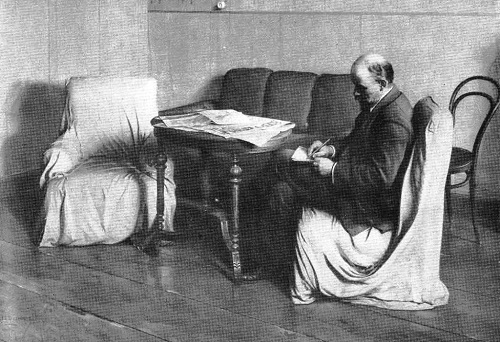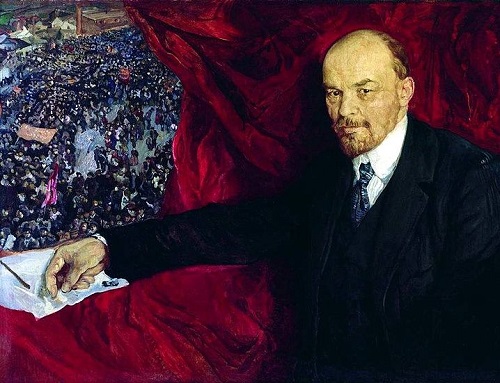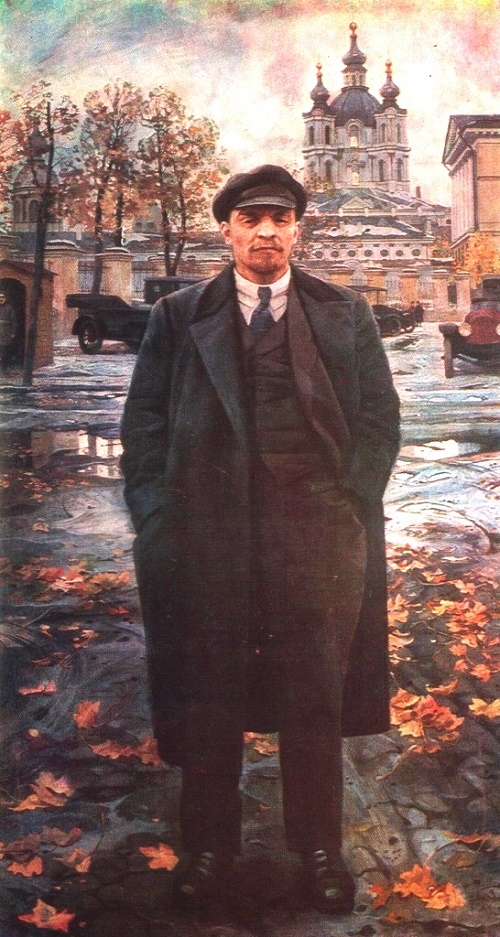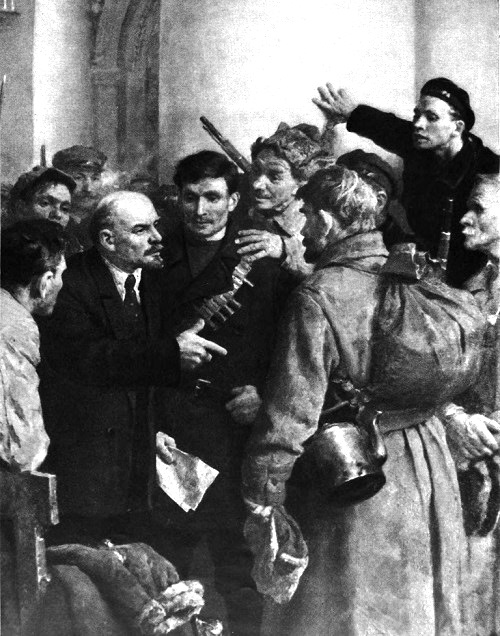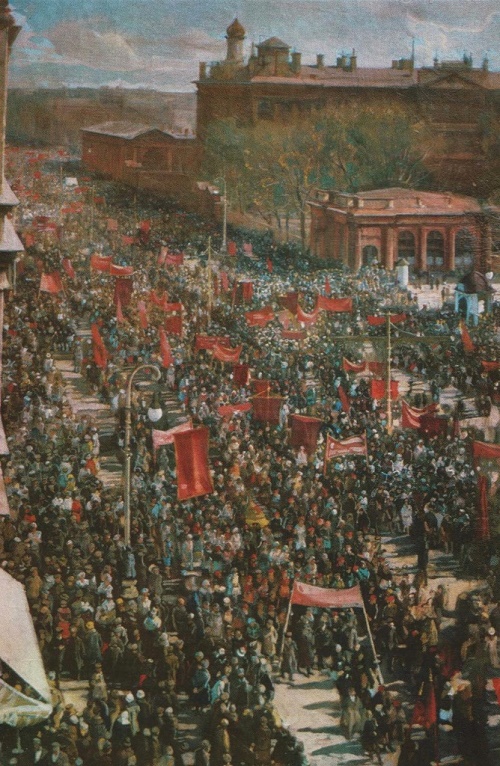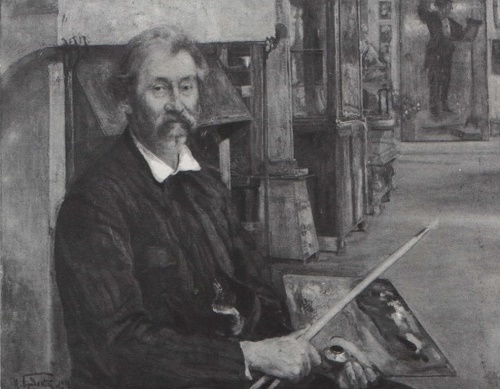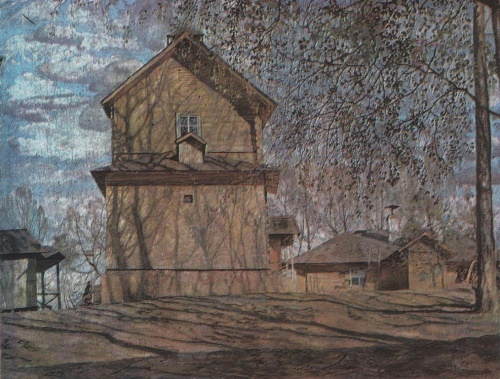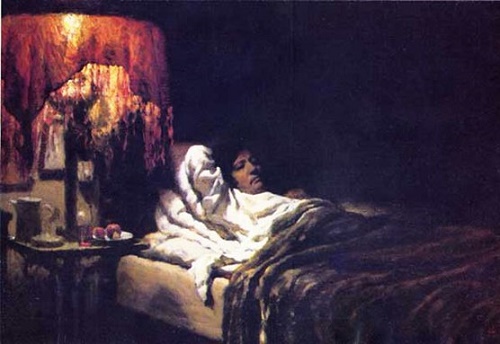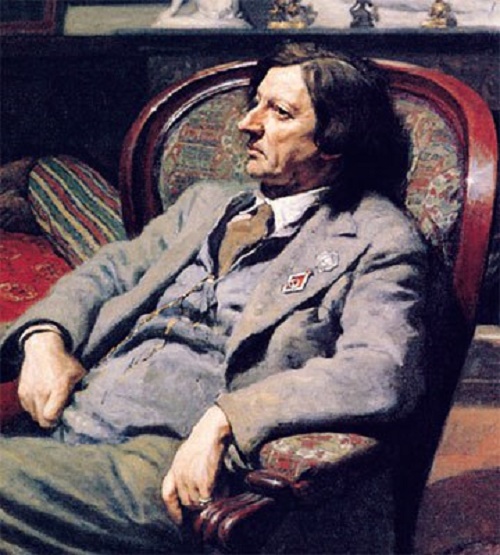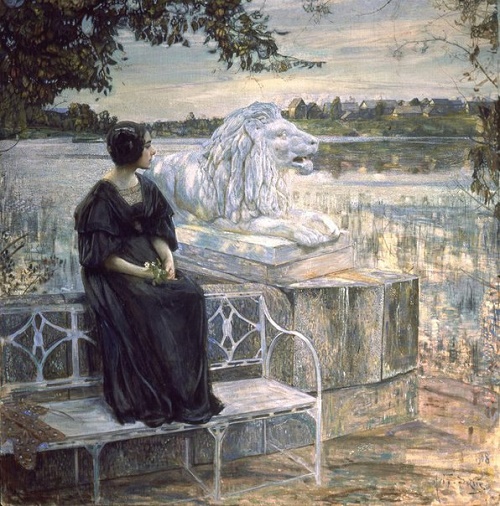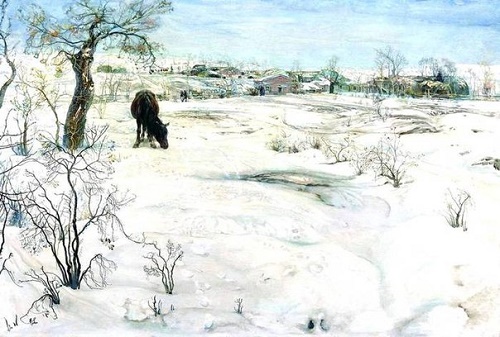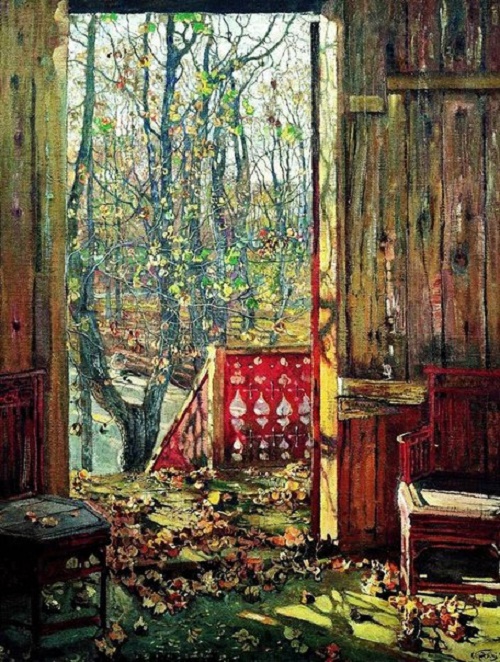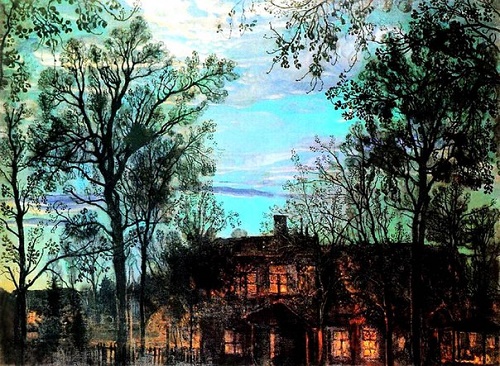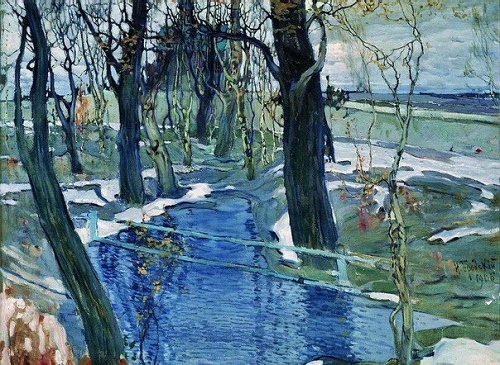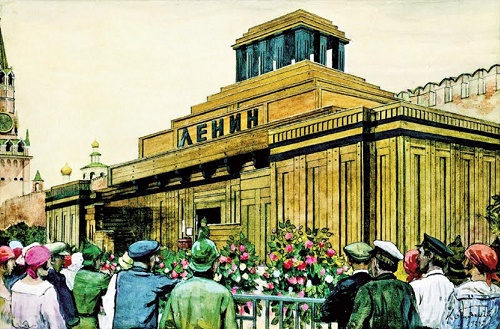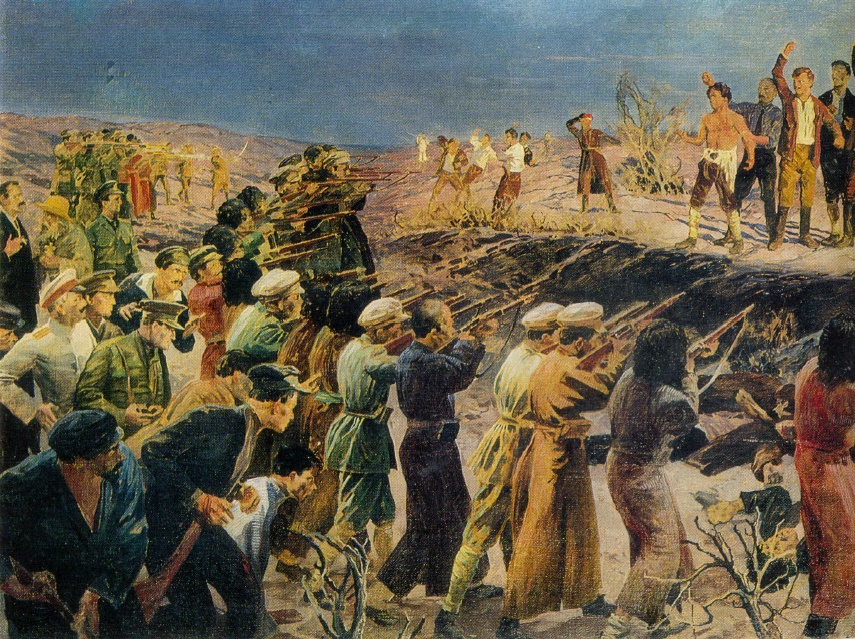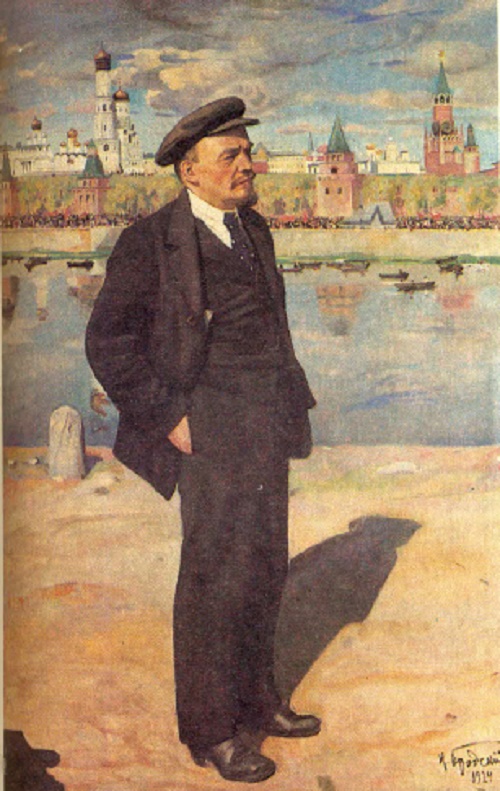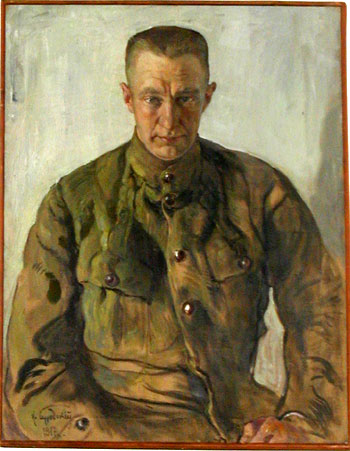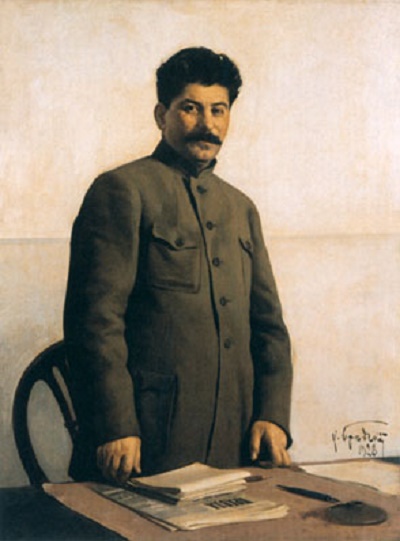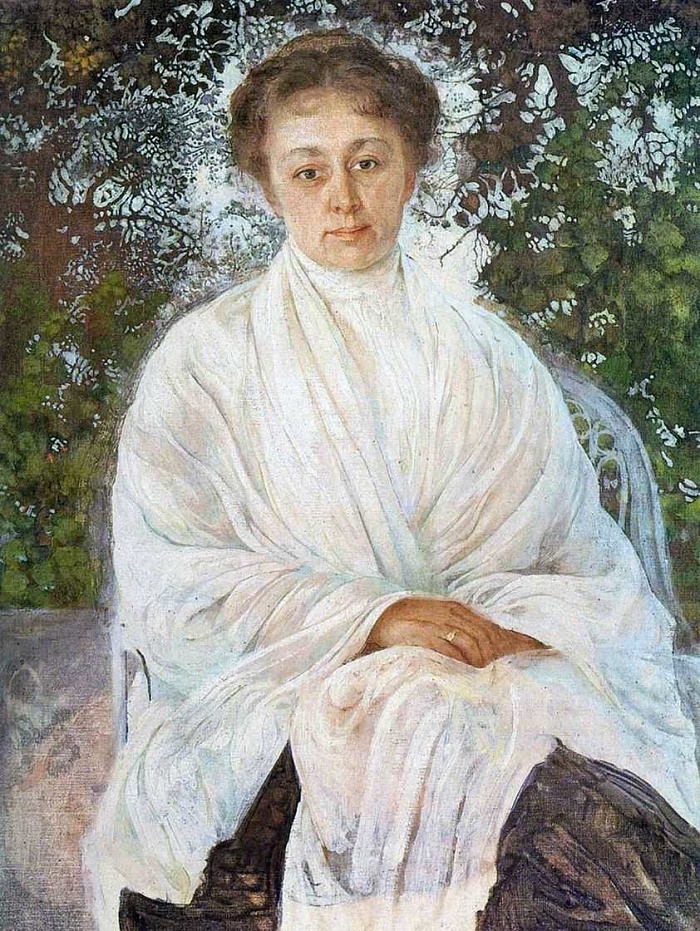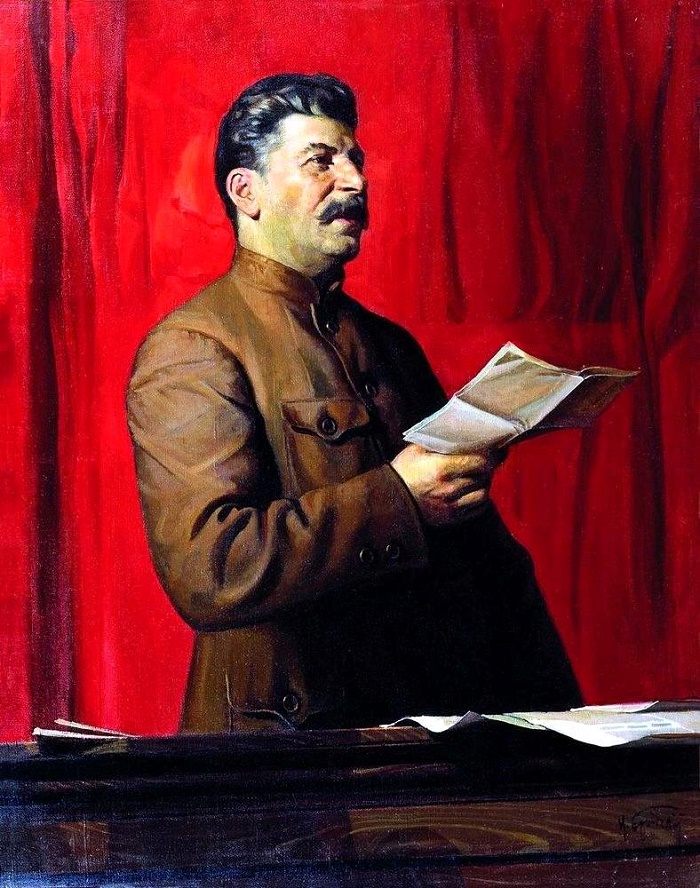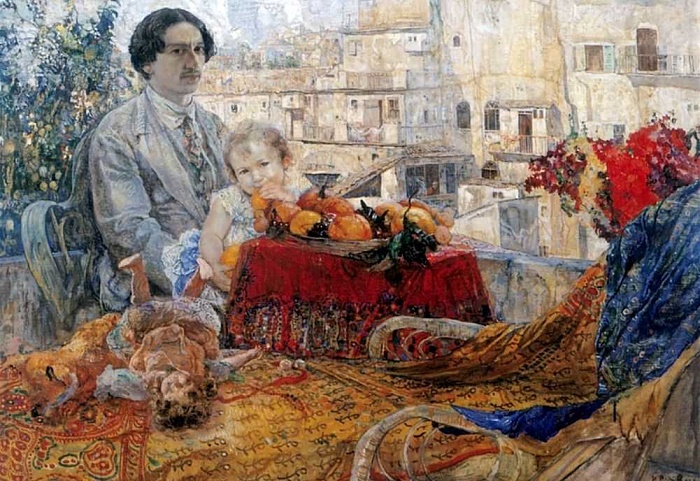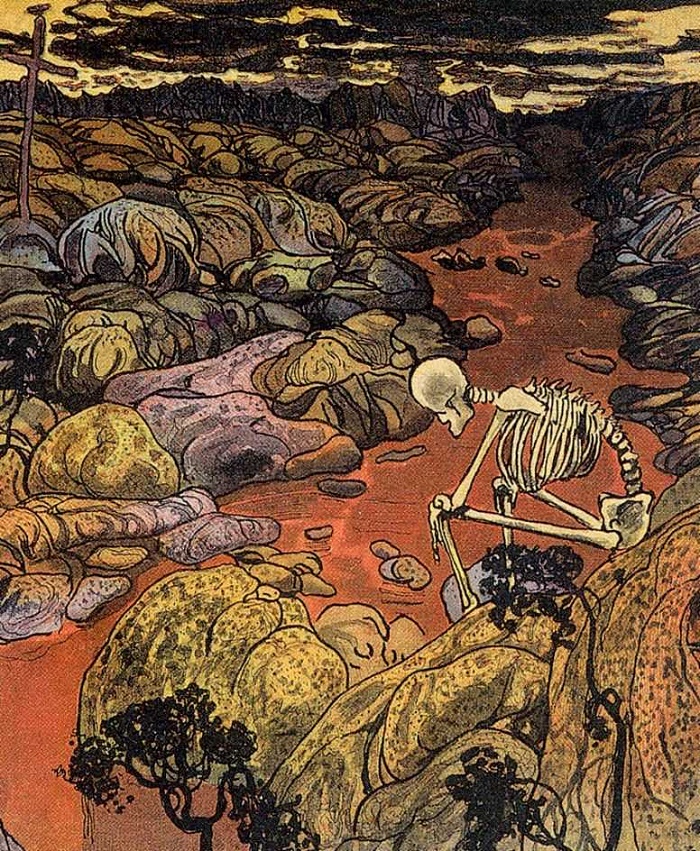Socialist Realism artist Isaak Brodsky
Socialist Realism artist Isaak Brodsky
It is difficult to overestimate the enormous impact that had Isaak Brodsky on the development and creation of the Soviet school of art based on the principles of socialist realism. Many generations of artists have successfully passed this school, having become outstanding representatives of our multinational art. The authority of Brodsky, his enormous popularity as the greatest artist of his time, the artist-realist especially appreciated by the part of young people who wanted to learn. For them he was a very close friend, who did not leave any request ignored. Isaak did titanic work in many areas: creative, educational, social, state, to each of which he gave himself completely. At the same time he found an opportunity to respond to any beginner artist, who turned to him with a request.
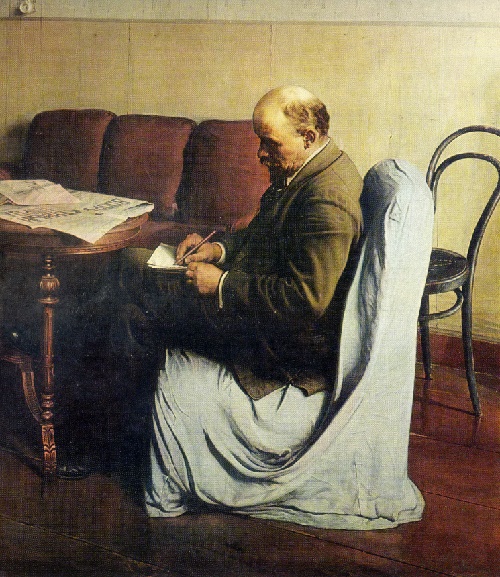
Socialist Realism artist Isaak Brodsky (6 January 1884 – August 14, 1939). Lenin in Smolny. Oil. 1930
Here is one of the examples, which are countless, it is a response from Brodsky to a letter of novice artist Petrov:
“Yesterday I returned from Kislovodsk and found your letter and drawings. Your burning desire to study painting is clear to me. Of course, I’ll help you enroll in technical school, but only need a few days until I know how and what has to be done there. Regarding your pictures, I will say that I like the ones that you do from nature … I do not recommend to copy postcards, it is useless. Actually, you should only draw from life, you will understand it later on. So, I will write in a few days what to do next, but for now all the best. Brodsky. ”
One can only wonder how attentively Brodsky visited the exhibitions in the Palace of Pioneers, art studios, found talented children among the authors of children’s works. And not only in Leningrad, but also in other cities of the USSR, where he had been. Such attention in many cases determines the whole future fate of young men.
As the head of the Russian Academy of Arts, Brodsky appeals to Sergey Kirov to help in the organization of the art boarding school at the Academy for gifted children coming from different cities of the Soviet Union. Brodsky knew by name almost the entire staff of the school – pupils and students of the Institute, remembered their early work, and rejoiced at the success of independent creative life.
From a speech of Brodsky to the graduates :
“Leaving the walls of the academy, do not forget that our country and our great people are waiting for you full of products in which you, each with your individual personality, express the great ideas of our time, Lenin’s ideas that updated our lives and our country. Remember, in order to become a Soviet artist, only desire is not enough, we need enthusiasm, patience, diligence, love for work and patriotism, without which there are no great things. Warmly love art, never get conceited, make progress, and always have critical and strict attitude to every your touch, to each work.”
These covenants and parting words were true creative compass for his students.
With the appearance of Brodsky in the Academy, in his workshop only two people signed up, but he was sure that in time this number will increase. Indeed, his worshop soon will become not only the largest, but also the strongest by composition. He devoted all his free from administrative and public duties time to his disciples. He met with them, not only in academia, but also at home.
Brodsky chose students very seriously and took only those in whom he saw the real talent and, most importantly, the desire to master the skill. And he was able to understand this. In Berdyansk he was told about a young man who worked in a barber shop, that he draws well. After looking at his work, Brodsky saw that he was certainly talented and needed a real, serious school. “You need to learn. Tomorrow I’m off to Leningrad. Get ready. Let’s go with me.” The name of this young man – Petya Belousov, and now – Pyotr Belousov, Corresponding Member of the USSR Academy of Arts, People’s Artist of the RSFSR, Professor, Head of the Institute of drawing for Painting, Sculpture and Architecture named after Ilya Repin.
In 1934, Brodsky was appointed director of the Russian Academy of Arts, which was urgently in need of strong hands, capable to bring the academy finally on the right track. Due to a specific task – to resolutely put an end to the dropouts from the Academy, get rid of illiterate artists, professionally weak people. He agreed to this position, clearly recognizing the difficulties at future path in his new role.
Brodsky could not imagine students learning only in the walls of the academy. He was firmly convinced that the artist, reflecting Soviet reality, should directly contact with it. The summer of 1935, he organized a trip brigade of his disciples to his homeland – Berdyansk. He personally supervised their work. They were in the native village of Brodsky – Sofievka, drew sketches in the fishing artel, collective farms and industrial plants of Berdyansk, painted portraits of workers, fishermen and farmers, and before leaving staged an exhibition of their art works, which enjoyed great success among the locals. What’s important – Brodsky paid all costs of this trip himself.
For Brodsky it was a great pleasure to spend time in the community of students. He used this time to hold conversations about art, and thus, as if continued the learning process. It was always a pleasure to watch this warm companionship of the teacher with the students. Speaking to them, he never showed his superiority – the conversation was always on an equal footing and facilitated the spiritual rapprochement.
Many students in the memories of him loved to emphasize that Isaak Brodsky treated all students equally, and no one stood out. But it is not so. He singled out and placed his hopes on Sasha Laktionov. It was, of course, his beloved disciple, whom he paid the most attention. He helped Laktionov not only with support and advice, but also financially. He valued very highly the talent of Laktionov and even sometimes said that “Laktionov already draws better than me.” And when in 1938, Laktionov painted a portrait of Brodsky, which was in the Russian Museum and soon became widely known. Brodsky saw it in its final form, and said: “Well, now I am not afraid to die …” Hearing this review Laktionov got terribly upset and began to cry. After all, it was said at the time, when the teacher was already seriously ill.
Brodsky managed to raise a brilliant galaxy of top-notch artists who have graduated from the Academy in 1938 – 1939 – A. Laktionov, Pyotr Belousov, Yuri Neprintsev and Alexey Gritsay, A. Yar-Kravchenko, Boris Shcherbakov, N. Timkov, A. Zarubin, and others. In addition, under his leadership, have finished graduate school Vladimir Serov and Victor Oreshnikov.
Brodsky founded the museum in his home in Berdyansk, and gave it about 250 works. The same number of paintings and drawings donated by him to the Dnepropetrovsk museum. After the artist’s death in 1939, his family donated to the state more than 500 paintings and drawings by outstanding Russian and Soviet masters, which are now in the memorial museum-apartment of his name.
Socialist Realism artist Isaak Brodsky (6 January 1884 – August 14, 1939) – Soviet and Russian painter and graphic artist, teacher and organizer of art education, Honored Artist of the RSFSR (1932), one of the main representatives of the realist movement in the Soviet art of the 1930s, the author of an extensive pictorial Leniniana.
Socialist Realism artist Isaak Brodsky
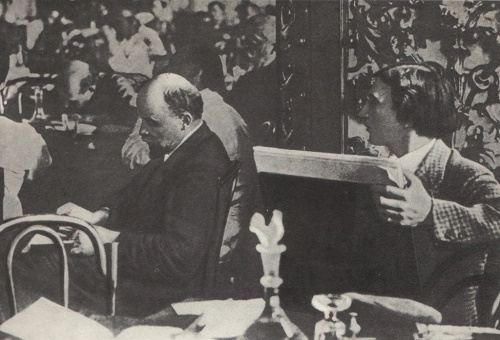
Socialist Realism artist Isaak Brodsky draws Lenin at the II Congress of the Comintern in the former St. Andrew Hall of the Kremlin. July – August 1920 photo
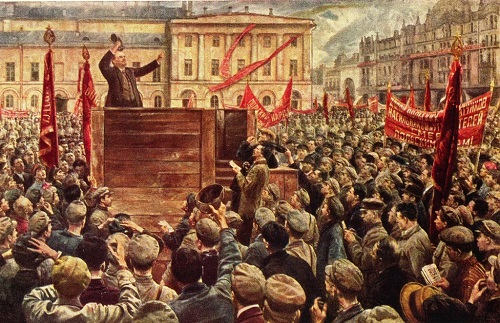
Speech by Lenin before the Red Army, sent to the Polish front May 5, 1920. 1933. Oil on canvas. The Central Lenin Museum
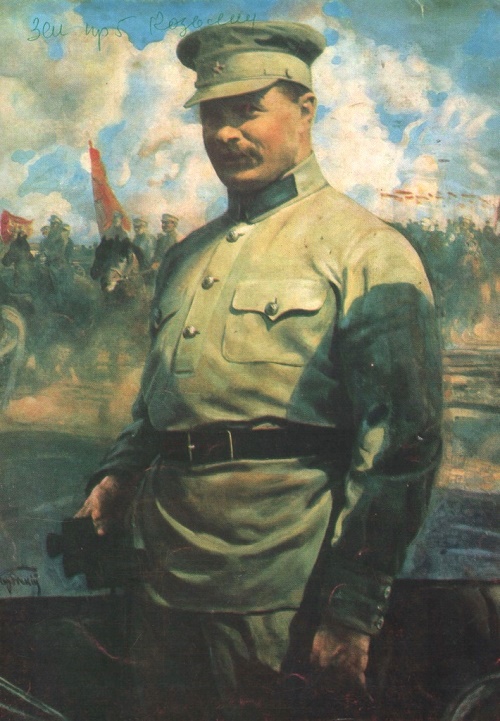
MV Frunze on maneuvers. Oil. 1929. The Central Museum of the Armed Forces of the USSR. Socialist Realism artist Isaak Brodsky
On the memories of Isaak Brodsky’s son – Evgeny Isaakovich Brodsky. 1980s


